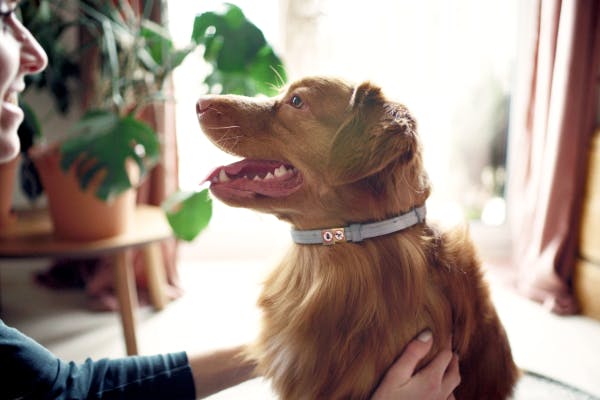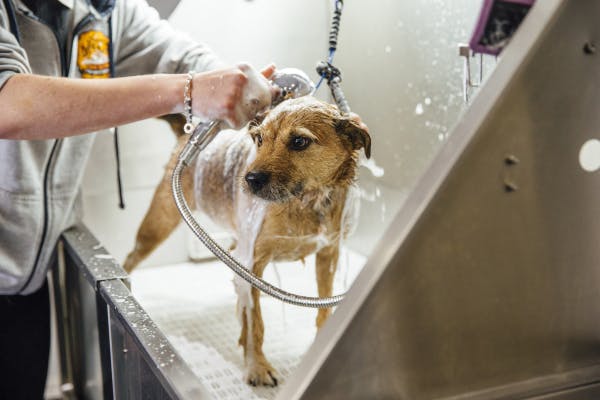learn about treat dispensing dog toys
How to Pick the Perfect Treat Dispensing Toy for Your Pet: Key Factors to Consider
Select the perfect treat-dispensing toy for your pet by considering size, shape, material, and type. These toys offer mental stimulation and entertainment.

- Discovering the Perks of Treat Dispensing Toys
- How to Select the Ideal Size and Shape for Your Pet
- Materials Matter: What to Look for in Treat Dispensing Toys
- Interactive vs. Passive Treat Dispensing Toys: Which One Is Right for Your Pet?
- Using Treat Dispensing Toys for Training and Mental Stimulation
- Toys for Dogs with Different Chewing Habits
- Adjustable Difficulty Levels in Treat Dispensing Toys
- Safety Considerations When Choosing a Treat Dispensing Toy
Discovering the Perks of Treat Dispensing Toys
Treat-dispensing toys have long been used to train and entertain pets, offering numerous benefits for both pets and their owners. Let's explore the advantages of treat-dispensing toys and how they can enhance your pet's overall well-being.
Slowing Down Eating Speed: Some pets eat their food too fast, which can lead to choking or bloating – both potentially life-threatening conditions. Treat-dispensing toys help slow down your pet's eating rate, making mealtime safer and more enjoyable for your furry companion.
Managing High Energy Levels: Pets with high energy levels benefit from treat-dispensing toys as they provide mental and physical stimulation. These toys require your pet to work for their treats, helping them use up some extra energy while keeping them occupied longer.
Developing Mental Skills: Treat-dispensing toys excel at improving your pet's problem-solving skills. As they try to figure out how to retrieve treats from the toy, they're exercising their cognitive abilities while learning new ways to tackle challenges.
Preventing Boredom: Pets can easily become bored, leading them toward destructive behaviors when left unoccupied. Treat-dispensing toys keep your pet entertained by focusing on a positive activity that reduces boredom-related behaviors.
Redirecting Undesirable Behaviors: If your pet has a habit of chewing furniture or engaging in other unwanted actions, treat dispensing-toys can serve as helpful redirection tools by providing an alternative outlet for their energy and curiosity—thus reducing destructive habits.
How to Select the Ideal Size and Shape for Your Pet
When choosing a treat dispensing-toy for your pet, it’s crucial that you consider the toy's size and shape. This ensures your pet can comfortably interact with the toy and get maximum enjoyment out of it. Here are some factors to weigh when selecting the right size and shape for your pet's treat-dispensing toy:
Pet Size: Your pet's size is a crucial factor in selecting a treat-dispensing toy. A small toy may pose a choking hazard, while a large one could be challenging for your pet to manage. Pick an appropriate-sized toy for your pet to guarantee their safety and enjoyment.
Pet Breed and Traits: Different breeds or types of pets might have unique needs or preferences regarding treat-dispensing toys. For instance, some dog breeds have stronger jaws, requiring more durable toys—while other breeds prefer softer materials—so factor in these considerations when choosing.
Toy Complexity: Treat-dispensing toys vary in complexity from simple designs to intricate puzzles; consider your pet's problem-solving skills when making your choice—a more complex option might suit challenge-loving pets better, whereas those who become easily frustrated may benefit from simpler designs.
best treat dispensing dog toys
- our rating95 out of 100
- our rating90 out of 100
- our rating90 out of 100
Materials Matter: What to Look for in Treat Dispensing Toys
When picking a treat dispensing-toy, don't forget about material selection! Here are common materials found in these toys:
Hard Plastic: Many treat dispensing-toys are made of sturdy hard plastic that withstands rough play—an excellent option for heavy chewers.
Rubber: Some options consist of rubber or rubber-like materials—these tend to be softer and quieter than hard plastic variants, making them ideal choices for pets that prefer gentle play experiences.
Soft Plastic: Treat dispensing-toys made with soft plastic provide gentle interaction with teeth and gums—the perfect choice if dental issues or sensitivity concern you!
Electronic Components: High-tech options featuring electronic components like timers or remote controls can release treats at preset times or intervals—great for keeping your pet entertained when you're away!
Easy-to-Clean Materials: Cleanliness is important—seek toys made from dishwasher-safe materials to keep everything hygienic and easy to maintain.
Interactive vs. Passive Treat Dispensing Toys: Which One Is Right for Your Pet?
Treat-dispensing toys fall into two main categories: interactive and passive. Understanding the differences helps you choose the best option for your furry friend.
Interactive Treat Dispensing Toys
Interactive options require action on your pet's part to receive a treat, often involving problem-solving skills that help build mental abilities. Examples include puzzle toys, treat balls, and devices requiring manipulation to release treats.
Passive Treat Dispensing Toys
Passive options don't require direct action from your pet; instead, treats are dispensed randomly or on a timer. Examples include electronic treat dispensers, treat-release mats, and slow-feeder bowls.
To decide between interactive and passive varieties for your pet, assess their personality traits and specific needs—an interactive toy suits high-energy pets needing physical exercise better than a passive one that would be ideal for pets with mobility issues or who need rest.
Also consider problem-solving preferences as some pets may become frustrated with interactive options while others relish the challenge of tackling them head-on! Offer both types of toys if you're uncertain about which one will be preferred; observe which one gets more use before making future choices!Ultimately both interactive and passive treat-dispensing toys offer benefits tailored toward individual needs/preferences—understanding these distinctions ensures an informed choice suited perfectly to delighting your furry companion!

Using Treat Dispensing Toys for Training and Mental Stimulation
Treat dispensing toys are excellent for keeping your pet entertained, and they can also be effective tools for training and mental stimulation. By incorporating these toys into your pet's daily routine, you can help enhance their cognitive abilities, focus, and overall happiness.
Reinforcing Positive Behaviors
You can use treat dispensing toys to reinforce positive behaviors in your pet. For instance, if you're teaching your dog to sit or stay, use a treat dispensing toy as a reward when they successfully perform the desired behavior. This helps your pet associate the positive behavior with a rewarding experience, making them more likely to repeat it in the future.
Encouraging Problem-Solving Skills
Many treat dispensing toys challenge your pet's problem-solving skills. These toys often require pets to manipulate the toy in a specific way to release treats inside. Providing these types of toys helps develop their cognitive abilities and keeps their minds sharp.
Reducing Separation Anxiety
For pets with separation anxiety, treat dispensing toys provide comfort and distraction while you are away from home. Fill the toy with your pet's favorite treats before leaving them alone; this helps reduce anxiety and keeps them occupied until you return.
Building Confidence
Treat dispensing toys also build confidence in shy or timid pets by giving them a sense of accomplishment when they learn how to manipulate the toy successfully.
Promoting Physical Activity
In addition to mental stimulation, treat dispensing toys encourage physical activity in pets as most require movement or interaction with the toy physically releasing treats inside—this added physical activity aids in maintaining good health and fitness levels.
Toys for Dogs with Different Chewing Habits
When choosing a treat-dispensing toy for your dog, consider its chewing habits: gentle chewers need soft materials like plush or rubber; moderate chewers require durable materials like strong rubber or tightly woven rope; aggressive chewers need extremely durable materials like heavy-duty rubber or hard nylon. Selecting an appropriate toy ensures that it will be safe and enjoyable for your pet to use.
Adjustable Difficulty Levels in Treat Dispensing Toys
Many treat dispensing toys come with adjustable difficulty levels, allowing you to customize the challenge for your pet. This feature is beneficial for catering to individual abilities, encouraging continued interest, and providing appropriate challenges based on factors such as age, physical capabilities, and cognitive skills.
Safety Considerations When Choosing a Treat Dispensing Toy
When selecting a treat dispensing toy for your pet, keep safety in mind—consider factors like size, shape, material, and ease of cleaning. Always supervise your pet when introducing a new treat-dispensing toy to ensure their safety and prevent potential hazards such as choking or ingestion of broken parts.







